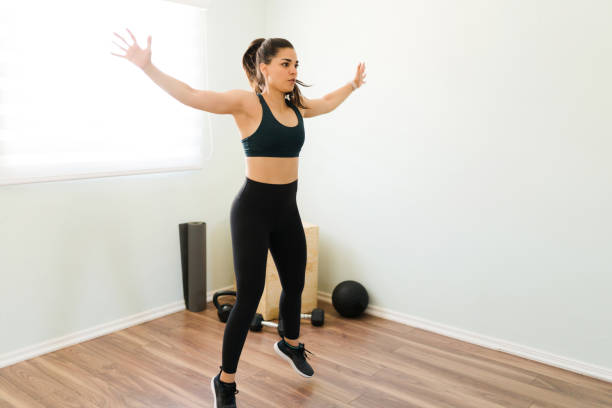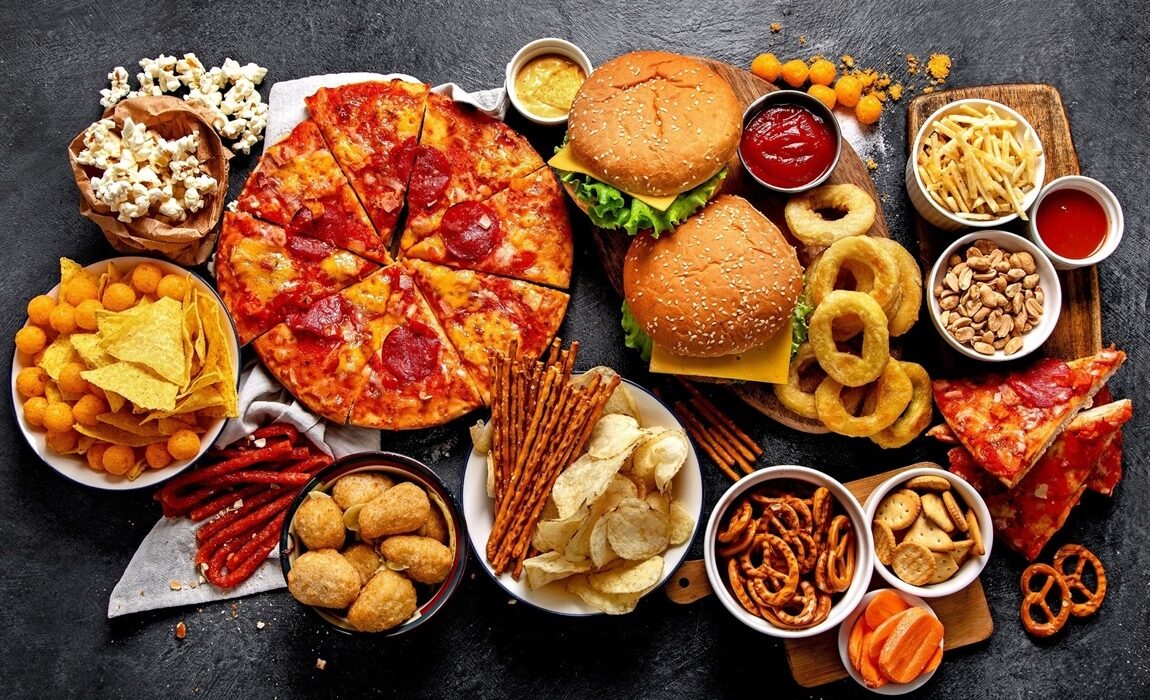Weight loss is one of the most common health goals in the world, yet it is also one of the most misunderstood. Many people chase quick fixes, fall for fitness fads, or spend hours doing workouts that barely move the needle. The truth is, no single exercise is a magic bullet. Effective, sustainable weight loss requires a combination of consistent workouts, proper nutrition, and lifestyle changes.
That said, research shows that certain types of workouts are particularly effective for burning calories, boosting metabolism, and promoting fat loss—while also preserving lean muscle mass and improving overall health. These workouts are “evidence-based,” meaning their effectiveness has been studied, tested, and proven in scientific research.
In this article, we’ll explore the 10 best evidence-backed workouts for weight loss, breaking down how each one works, why it’s effective, and how you can incorporate it into your life.
1. High-Intensity Interval Training (HIIT)
If you’ve ever wondered why everyone is talking about HIIT, it’s because it works—and the science backs it up. HIIT involves alternating between short bursts of intense effort and periods of rest or low-intensity activity. For example, sprinting for 30 seconds, then walking for 90 seconds, repeated for 15–20 minutes.
Studies show HIIT burns calories quickly and keeps your metabolism elevated long after the workout ends—a phenomenon known as excess post-exercise oxygen consumption (EPOC) or the “afterburn effect.” In fact, research published in the Journal of Obesity found that HIIT can reduce visceral fat (the dangerous fat around your organs) more effectively than steady-state cardio.
HIIT is time-efficient, making it perfect for busy schedules. A typical session may last just 20–30 minutes yet provide the same or greater benefits as an hour of traditional exercise.
How to Try It:
- Warm up for 5 minutes.
- Sprint, cycle, or row at maximum effort for 20–30 seconds.
- Recover by moving slowly for 60–90 seconds.
- Repeat for 10–12 rounds.
2. Strength Training
Many people think weight loss is all about cardio, but strength training is just as important—if not more. Lifting weights builds lean muscle mass, and muscle burns more calories at rest than fat. In other words, the more muscle you have, the higher your resting metabolic rate.
Research in the International Journal of Obesity shows that strength training not only reduces body fat but also helps prevent the muscle loss that often accompanies dieting. This is crucial, because losing muscle slows down metabolism, making it harder to keep weight off in the long term.
Strength training also reshapes the body, creating a leaner, more toned appearance—even if the scale doesn’t move drastically.
How to Try It:
- Focus on compound exercises like squats, deadlifts, bench presses, and rows.
- Train 2–4 times per week.
- Start with lighter weights and gradually increase intensity.
3. Walking
It might sound too simple, but walking is one of the most underrated workouts for weight loss. It’s low-impact, sustainable, and easy to incorporate into daily life. While it doesn’t burn as many calories per minute as HIIT or running, its accessibility makes it powerful—because consistency is what matters most.
According to research published in the Journal of Physical Activity & Health, walking just 8,000–10,000 steps per day is associated with lower body fat and reduced risk of weight gain over time.
Walking also helps manage stress, improve mood, and support recovery from more intense workouts, making it an essential part of a weight-loss routine.
How to Try It:
- Aim for at least 30–60 minutes of brisk walking most days.
- Use a pedometer or fitness tracker to stay motivated.
- Add variety by walking outdoors, on a treadmill, or even with a weighted backpack (rucking).
4. Running
Running is one of the most calorie-burning exercises available, making it a popular choice for weight loss. Depending on speed and body weight, running can burn anywhere from 300 to 600 calories per 30 minutes.
Beyond calorie burn, running improves cardiovascular health, strengthens bones, and triggers endorphin release (the “runner’s high”). A study in the Journal of Sports Medicine and Physical Fitness found that consistent running is strongly associated with fat loss, especially when combined with a balanced diet.
While it can be tough on the joints for some, running is highly adaptable. From short sprints to long-distance endurance runs, it can be tailored to fit nearly any fitness level.
How to Try It:
- Start with intervals (e.g., jog for 2 minutes, walk for 1 minute).
- Progress to steady runs of 20–40 minutes.
- Gradually increase distance or intensity each week.
5. Cycling
Cycling—whether on a stationary bike or outdoors—is another powerful tool for weight loss. It provides an excellent cardiovascular workout while being lower-impact than running, making it easier on the joints.
Research in the Scandinavian Journal of Medicine & Science in Sports shows that cycling significantly improves body composition, reducing fat mass while increasing muscle endurance.
Because it’s fun and versatile, cycling is sustainable. It can be done solo, in groups, or as part of a structured spin class. Plus, like running, cycling can burn hundreds of calories per hour depending on speed and intensity.
How to Try It:
- Ride outdoors on varied terrain or indoors on a stationary bike.
- Add HIIT-style intervals for maximum calorie burn.
- Aim for 2–4 cycling sessions per week, 30–60 minutes each.
6. Swimming
Swimming is often called the “perfect workout”—and for good reason. It works nearly every muscle group, provides resistance training, and elevates heart rate, all while being gentle on the joints.
According to the Journal of Exercise Rehabilitation, swimming not only helps with fat loss but also improves cardiovascular health and flexibility. Because water supports the body, it’s especially beneficial for people with arthritis, injuries, or obesity who may find high-impact exercise painful.
Swimming also burns significant calories. Depending on stroke and intensity, you can burn 400–700 calories per hour.
How to Try It:
- Alternate between strokes (freestyle, breaststroke, backstroke).
- Try interval training, such as sprinting one lap, then swimming slowly the next.
- Swim for 30–60 minutes, 2–3 times per week.
7. Rowing
Rowing is a full-body workout that combines strength and cardio in one efficient movement. It works the legs, back, arms, and core simultaneously while providing a serious calorie burn.
A study published in Metabolism found that rowing activates up to 85% of the body’s muscles, making it more efficient than many other forms of cardio. Rowing also improves endurance, posture, and strength—all while being low-impact.
On average, rowing can burn 400–600 calories per hour, depending on intensity. It’s also mentally engaging, requiring coordination and rhythm.
How to Try It:
- Use a rowing machine at the gym or home.
- Focus on proper technique: drive with your legs, lean back slightly, then pull with your arms.
- Alternate between steady rowing and short sprints for maximum fat loss.
8. Kickboxing
Kickboxing is not only an incredible workout for the body but also a stress reliever for the mind. Combining punches, kicks, and fast movements, it delivers a high-calorie burn while also improving strength, coordination, and balance.
Research in the Journal of Strength and Conditioning Research shows that kickboxing enhances aerobic fitness and body composition while also increasing self-confidence and mental focus.
Because it’s dynamic and fun, kickboxing is sustainable—it feels more like play than exercise. Classes or online workouts also provide structure and motivation.
How to Try It:
- Join a kickboxing class or follow a guided online session.
- Train 2–3 times per week.
- Mix cardio combinations with strength drills (like push-ups and squats) for added results.
9. Circuit Training
Circuit training combines strength training and cardio into one efficient workout. Typically, it involves moving through a series of exercises (like push-ups, squats, lunges, jumping jacks) with little to no rest in between.
Because your heart rate stays elevated while your muscles are challenged, circuit training maximizes calorie burn. According to research in the American Journal of Sports Medicine, circuit workouts can burn up to 30% more calories than traditional weight training.
It also improves muscular endurance, cardiovascular health, and overall conditioning—making it one of the best all-around workouts for weight loss.
How to Try It:
- Pick 6–8 exercises (mix strength and cardio moves).
- Perform each for 30–60 seconds with minimal rest.
- Complete 2–4 rounds for a 20–40 minute workout.
10. Yoga and Pilates (When Paired with Other Training)
While yoga and Pilates are not the most calorie-burning workouts on their own, they play a crucial role in sustainable weight loss. Both improve flexibility, core strength, balance, and body awareness. They also reduce stress and promote mindfulness, which can prevent overeating and emotional eating.
Research in the Journal of Alternative and Complementary Medicine found that regular yoga practice is linked to healthier body weight and improved eating behaviors. Pilates, on the other hand, strengthens deep core muscles and improves posture, making other workouts more effective.
When paired with cardio or strength training, yoga and Pilates become powerful allies in a weight-loss journey.
How to Try It:
- Add 1–2 yoga or Pilates sessions per week.
- Use them as active recovery on rest days.
- Focus on breathwork and mindfulness to support healthy eating habits.
Conclusion
Weight loss is not about quick fixes or punishing routines—it’s about finding workouts that are effective, sustainable, and enjoyable. Evidence-based science shows that HIIT, strength training, running, cycling, swimming, rowing, and other dynamic workouts are powerful tools for burning fat and building health. But walking, yoga, and other gentler exercises also play a key role by making fitness accessible and sustainable.
The best workout is ultimately the one you can stick with long-term. By mixing different types of training, you’ll not only lose weight but also build strength, improve cardiovascular health, and create a body—and lifestyle—that supports you for life.






